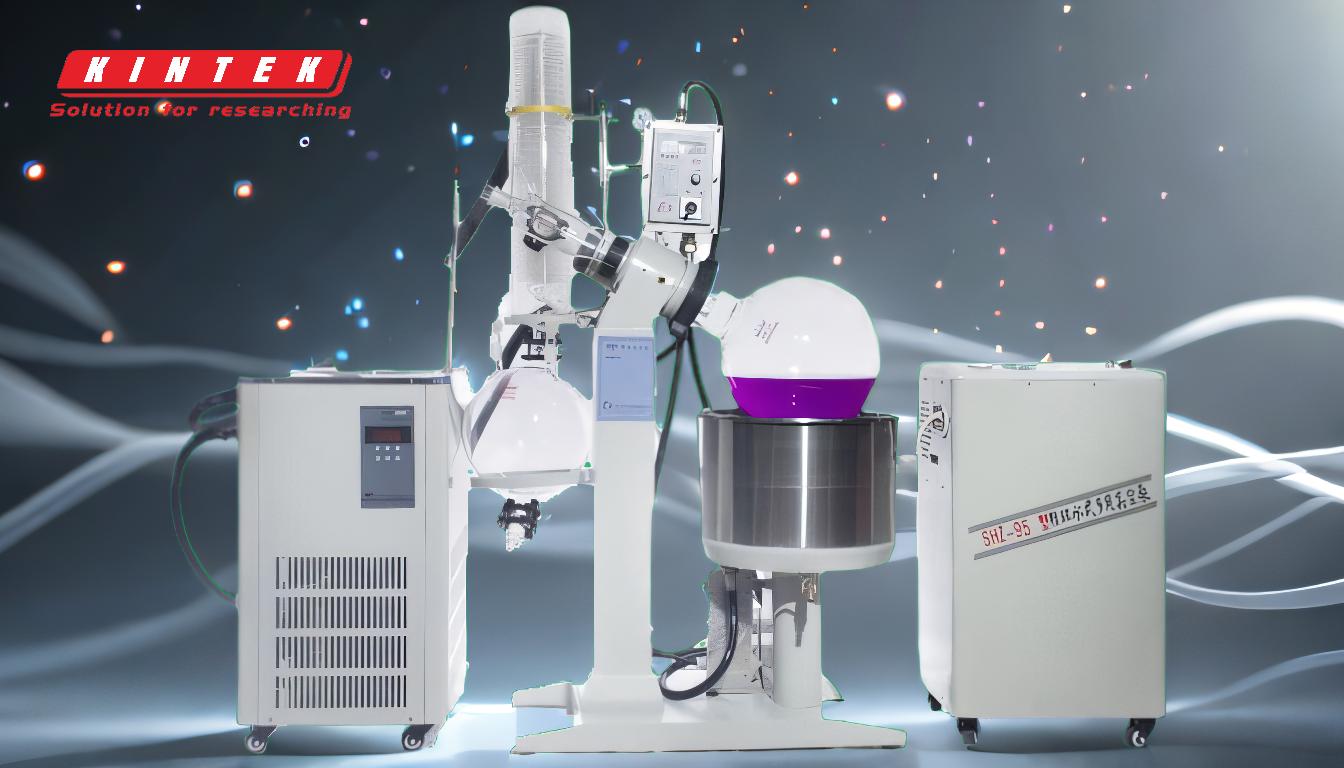Fractional distillation and simple distillation are both techniques used to separate components of a liquid mixture based on their boiling points. However, fractional distillation is more complex and efficient, primarily due to the inclusion of a fractionating column. This column allows for multiple stages of vaporization and condensation, enabling the separation of liquids with very close boiling points. Simple distillation, on the other hand, is more straightforward and is typically used for mixtures with distinct boiling points. The key differences lie in the equipment, the process efficiency, and the types of mixtures each method can effectively separate.
Key Points Explained:

-
Presence of a Fractionating Column:
- Fractional Distillation: The fractionating column is the defining feature of fractional distillation. It provides additional surface area and stages for vapor and liquid to interact, allowing for repeated condensation and vaporization. This process enhances the separation of components with similar boiling points.
- Simple Distillation: In simple distillation, there is no fractionating column. The vapor travels directly from the boiling flask to the condenser, where it is condensed and collected. This method is less effective for separating components with close boiling points.
-
Separation Efficiency:
- Fractional Distillation: The multiple stages of separation in the fractionating column significantly increase the purity of the separated components. This makes fractional distillation suitable for separating complex mixtures, such as those found in petroleum refining or alcohol purification.
- Simple Distillation: Simple distillation is less efficient and is generally used for simpler mixtures where the components have significantly different boiling points. It is not effective for separating components with similar boiling points.
-
Equipment Complexity:
- Fractional Distillation: The setup includes a fractionating column, which adds complexity and cost to the equipment. Other components include a round-bottom flask, heat source, receiving flask, thermometer, and condenser.
- Simple Distillation: The setup is simpler and less expensive, consisting of a boiling flask, heat source, condenser, and receiving flask. The absence of a fractionating column makes it easier to set up and operate.
-
Applications:
- Fractional Distillation: This method is commonly used in industries where high-purity separation is required, such as in the production of alcohol, gasoline, and other petroleum products. It is also used in laboratories for precise separations.
- Simple Distillation: Simple distillation is often used in educational settings and for basic separations, such as purifying water or separating a solvent from a solution.
-
Temperature Control:
- Fractional Distillation: The fractionating column allows for better temperature control, with different sections of the column maintaining different temperatures. This gradient helps in the effective separation of components with close boiling points.
- Simple Distillation: Temperature control is less precise, and the entire system operates at a more uniform temperature, which limits its effectiveness for complex separations.
-
Cost and Maintenance:
- Fractional Distillation: The additional equipment and complexity make fractional distillation more expensive to set up and maintain. However, the increased efficiency and precision often justify the higher cost in industrial applications.
- Simple Distillation: The simpler setup makes it more cost-effective and easier to maintain, but it is limited in its applications due to its lower efficiency.
In summary, fractional distillation and simple distillation differ primarily in the presence of a fractionating column, which enhances the separation efficiency of the former. Fractional distillation is more complex and costly but is essential for separating components with similar boiling points, making it indispensable in many industrial processes. Simple distillation, while less efficient, is simpler and more cost-effective, suitable for basic separations where high precision is not required.
Summary Table:
| Aspect | Fractional Distillation | Simple Distillation |
|---|---|---|
| Fractionating Column | Includes a fractionating column for multiple vaporization-condensation stages | No fractionating column; vapor travels directly to the condenser |
| Separation Efficiency | High efficiency; suitable for separating components with very close boiling points | Lower efficiency; best for mixtures with distinct boiling points |
| Equipment Complexity | More complex and costly due to additional components like the fractionating column | Simpler and less expensive setup |
| Applications | Used in industries like petroleum refining and alcohol production for high-purity separation | Ideal for basic separations like water purification or solvent separation |
| Temperature Control | Better control with temperature gradients in the fractionating column | Less precise temperature control |
| Cost and Maintenance | Higher cost and maintenance due to complexity | More cost-effective and easier to maintain |
Need help choosing the right distillation method for your application? Contact our experts today!











